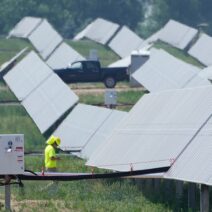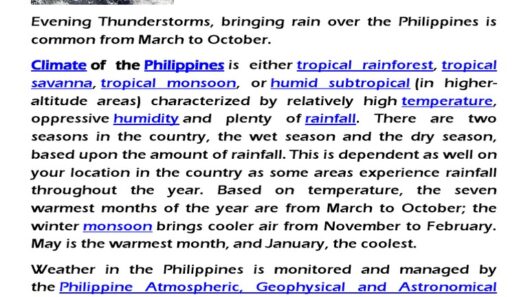Maryland is a unique tapestry of environmental diversity, with its climate showcasing a remarkable blend of subtropical and temperate characteristics. Nestled between the Atlantic Ocean and the Appalachian Mountains, the state experiences an array of weather patterns, affording it a rich variety of ecological niches and seasonal transformations. Understanding Maryland’s climate goes beyond mere temperatures; it encapsulates the moods of the Chesapeake Bay, the rhythm of the seasons, and the intricate interplay between human activity and natural phenomena.
Geographically, Maryland’s position along the eastern seaboard of the United States contributes significantly to its climatic conditions. The overall climate can be classified as humid subtropical in the southern regions, transitioning to a temperate maritime climate in the north, particularly in areas approaching the Pennsylvania border. This gradient produces diverse weather systems, often defined by two dominant air masses: the warm, humid air from the Gulf of Mexico and the cooler, drier air from Canada.
Winters in Maryland are typically moderate, with average temperatures ranging from the mid-20s to mid-40s Fahrenheit. Northern regions experience colder spells, characterized by the occasional snowfall, while coastal areas enjoy a milder winter climate. The convergence of weather patterns during this season often results in nor’easters, powerful storms that can unleash significant snowfall and strong winds, especially along the eastern shore.
Spring heralds a revival as blossoms emerge and wildlife stirs from its winter slumber. March through May showcases a gradual warming trend, with temperatures bouncing from the low 50s to the high 70s. This is a critical period for ecosystems, as migratory birds return, and flora awakens. However, Spring is also marked by volatility—severe thunderstorms can erupt, bringing heavy precipitation and the potential for flash floods, particularly in the low-lying areas adjacent to the Chesapeake Bay.
The Chesapeake Bay, Maryland’s crown jewel, profoundly influences local climate conditions. The Bay acts as a thermal reservoir, moderating temperatures along its shores and impacting the surrounding flora and fauna. The water body allows for a thriving biosphere, but it is not without challenges. The warming waters can exacerbate algae blooms, threatening aquatic life and altering the base of the food chain. The Bay’s health is critically intertwined with climate resilience strategies, as rising sea levels pose a daunting threat to its delicate ecosystems.
Summer ushers in warmth, with average temperatures ranging from the mid-70s to high 80s. This season can be humid, particularly in the central and southern parts of the state, creating sweltering conditions conducive to severe thunderstorms and heatwaves. The sultry climate offers a vibrant tableau for outdoor activities, from beach outings along the Atlantic to explorations of Maryland’s lush state parks. However, the heat also necessitates awareness of heat-related illnesses, as high temperatures coupled with humidity increase health risks.
The phase of autumn captures a mesmerizing transformation as foliage transitions into a kaleidoscope of reds, oranges, and yellows. Beginning in September and lasting through November, fall brings cooler temperatures, ranging from the mid-60s to low 50s, along with a gradual decrease in humidity levels. The picturesque sceneries during this season are attracting tourists and residents alike to partake in various seasonal festivals celebrating the harvest. Rainfall becomes more prevalent, serving to replenish resources in preparation for the dormancy of winter.
A key aspect of Maryland’s climatic charm lies in its susceptibility to extreme weather phenomena, a reality that underscores the urgency of climate awareness. The region is not immune to hurricanes, which can inflict significant damage along the coast, especially from August through October. The increasing frequency and severity of such events are stark reminders of climate change’s influence on traditionally stable weather patterns.
Climate variability also raises concerns regarding the health of ecosystems and biodiversity within Maryland. Wildlife corridors can become fragmented, affecting migration patterns and species survival. The state’s rich biodiversity—including numerous species of fish, birds, and terrestrial mammals—is intricately tied to the health of its waters and forests, both of which are threatened as weather extremes become more common and intense.
Maryland’s commitment to addressing climate change is reflected in various state initiatives aimed at promoting sustainability and environmental stewardship. Programs targeting renewable energy adoption, conservation efforts, and responsible land use are crucial in mitigating the adverse impacts of climate change and protecting the state’s natural resources for future generations. Communities engage in local efforts to raise awareness, restore habitats, and advocate for policies that foster a more resilient environment.
In combining nature’s diverse bounty with environmental challenges, Maryland showcases the delicate balance between human existence and the natural world. The climate here not only offers a picturesque representation of seasonal beauty but also serves as a crucial reminder of the responsibilities we hold towards the environment. Each season invites engagement, reflection, and action in embracing a sustainable future.
As Maryland continues to confront climate change head-on, residents and visitors alike play a vital role in safeguarding this incredible state’s natural heritage. Understanding and preserving the unique climate dynamics of Maryland will ensure its ecological integrity for generations to come. Whether through advocacy, education, or simple appreciation of the vibrant ecosystems, each action contributes to a broader movement toward environmental resilience and responsibility.







